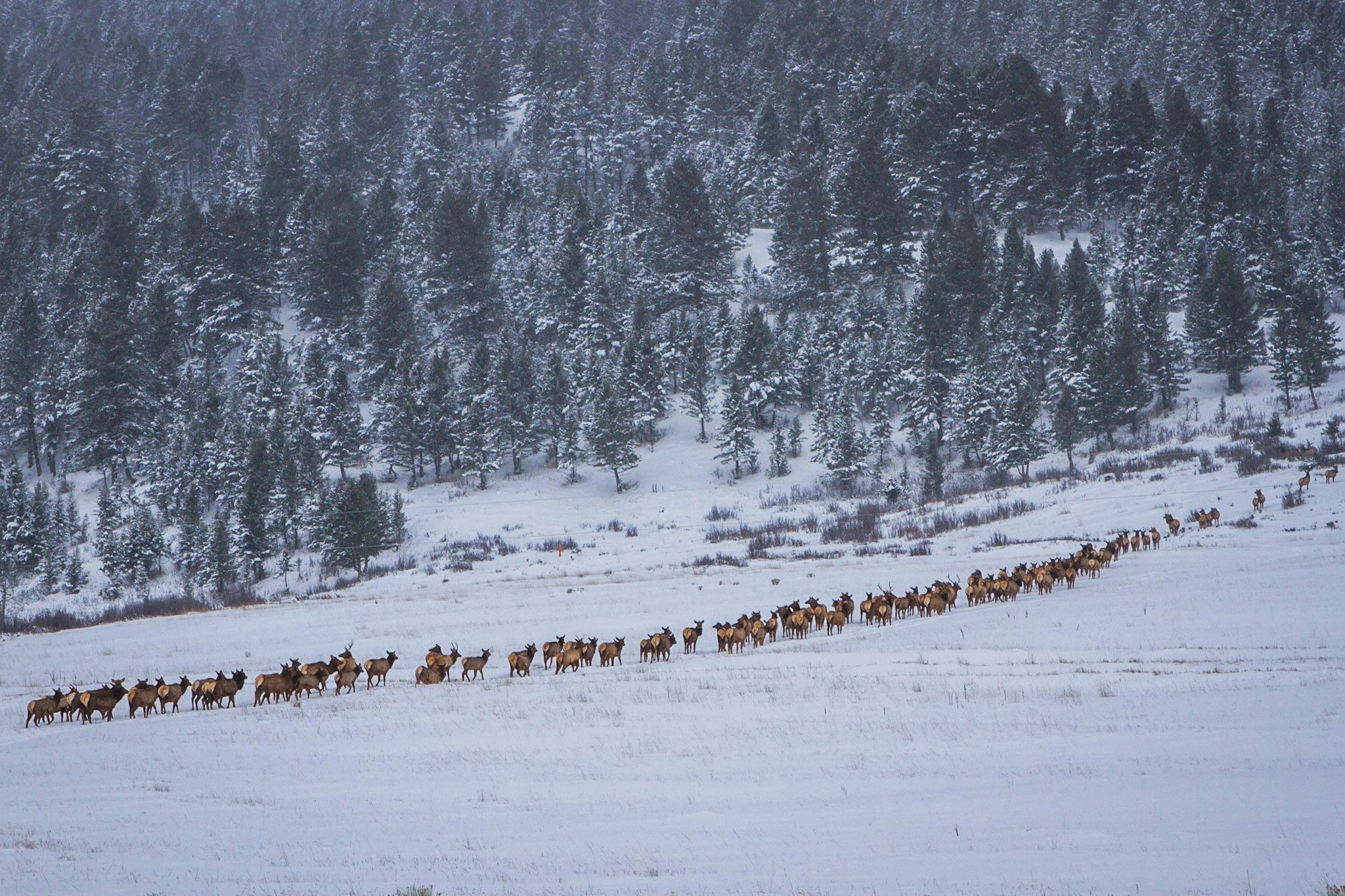Rocky Mountain animals will move as the climate warms. These corridors could give them an easier path.

By Ben Guarino Washington Post, March 18, 2020
Graphics by Joe Fox and Lauren Tierney
LARAMIE, Wyo.
Long-haul trucks roar along Interstate 80, a transportation backbone that stretches from San Francisco to just outside New York City. Traffic is so heavy here that the state’s transportation department recently counted a passing vehicle every 10 seconds, on average.
This vital, four-lane corridor of commerce also threatens wildlife. It blocks the ancient north-south paths of mule deer, elk and pronghorn, creatures that embody the American West. Animals that try to complete annual migrations, which their species have made for thousands of years, risk deadly encounters with passenger cars or 18-wheelers.
And as the climate changes, altering where animals graze and find suitable habitats, migration corridors are more important than ever to their survival.
“We can’t predict exactly what the impacts of climate change are going to be, or what species are going to be impacted,” said Hall Sawyer, a research biologist at Western Ecosystems Technology. “We do know one fundamental truth: That if we can keep this landscape connected, improve that permeability, they’ll be better off.”
Wyoming officials and scientists have a plan: Build wildlife crossings to preserve migrations. Bridges, tunnels and other structures — imagine protected bike lanes, but for animals — can protect animals from hazards like highways and help them navigate a warming planet.
Continue to full article here and interactive graphics.

